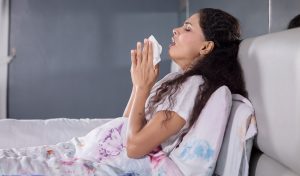The number of COVID-19 cases caused due to COVID-19 is rising worldwide, nearly 7 months after it was first detected. Being a respiratory pathogen, the virus affects both the upper and lower respiratory tract of humans.
With no known cure in sight, and vaccine development still in process, panic has once again gripped everyone after a group of scientists have suggested findings which support the possibility of the COVID-19 virus to be airborne. This means that the risk of transmission of the virus is much higher than what was originally thought.
As per the World Health Organisation (WHO), the airborne transmission may be possible in specific circumstances and settings. These include settings in which medical procedures that generate droplets (smaller than 5 microns) from patients such as bronchoscopy or disconnecting a patient from the ventilator. These droplets could be suspended in the air for some time before settling down on surfaces.
Till date, social distancing and hand washing are the measures suggested by the WHO in order to prevent people from contracting the disease.
Transmission of novel coronavirus occurs much more commonly through respiratory droplets than through surfaces/objects.

Transmission of virus can occur through direct, indirect, or close contact with infected people through saliva and respiratory droplets which are expelled when an infected person coughs, sneezes & talks. In these situations, respiratory droplets that include the virus can reach the mouth, nose or eyes of a healthy person and can result in infection. Indirect contact transmission involving contact of a person with a contaminated object or surface may also be possible.
Covid is very contagious and people who get infected with the coronavirus can spread it to others 2 to 3 days before symptoms start and are most contagious 1 to 2 days before they feel sick.
Dr. Ashish Bajaj, M.B.B.S., M.D.
Airborne transmission can be explained as the spread of infectious droplets that are released in air over long distances and time. These transmissions can occur during medical procedures that generate droplets or through an infected individual.
A susceptible person could inhale aerosols and could become infected if the aerosols contain the virus in enough quantity to cause infection within the recipient. However, enough proportion of exhaled droplets that evaporate to generate aerosols is required to cause infection in another person is not yet known, but it has been studied for other respiratory viruses. Thus, much more research is needed given the possible implications of such a route of transmission.
The primary mode of transmission of SARS-CoV-2 is via exposure to respiratory droplets carrying the infectious virus from close contact or droplet transmission from presymptomatic, asymptomatic, or symptomatic individuals harboring the virus.
Dr. M.G. Kartheeka, MBBS, MD
There is still not enough or convincing evidence to prove that novel coronavirus is airborne. The experts believe that even if there is no ‘significant’ proof that COVID-19 can be transmitted through droplets. However, the experts suggest that the virus is more infectious in closed settings, without proper ventilation.
They also point out that the idea of droplet transmission due to droplets hanging in the air for a long period of time is capable of infecting a healthy person.
Now more than ever, it is absolutely necessary that you always wear a face mask when you are out of the house.
Asymptomatic patients can be carriers and spreaders of the virus as well. Hence it is essential to maintain social distance (more than 6 feet) when you are outdoors.

Older adults and people with serious chronic medical conditions are at higher risk of serious illness.
Wash your hands with soap or water/ alcohol-based sanitizer frequently. Avoid touching your nose, mouth, or eyes. Make sure that you cover your nose and mouth while sneezing or coughing.
There are chances that a person can get COVID-19 by touching a surface or object. Use common household disinfectants to clean and disinfect frequently touched surfaces such as tables, doorknobs, handles, phones, and switches.

The virus that causes COVID-19 can lead to some flu-like symptoms, such as aches, fever, and cough. If you experience any of these symptoms, you should get in touch with your doctor immediately.
We are yet to completely understand the extent of airborne transmission of coronavirus due to poor ventilation & through infect or an asymptomatic person. Many such unanswered questions about transmission of the virus are still pending and research to seek these answers is ongoing and encouraged.